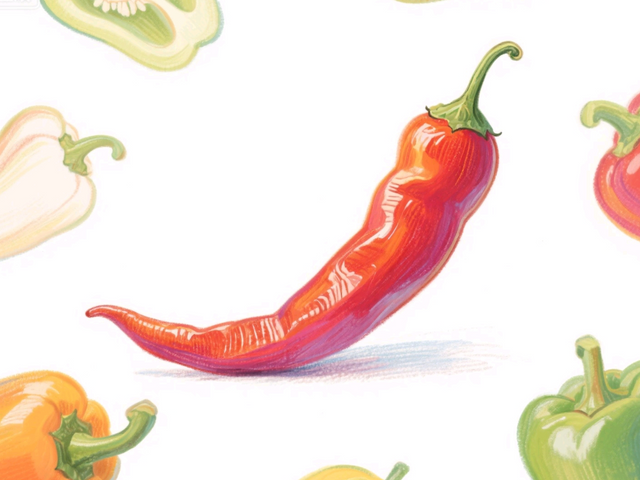Pepper evolution
Chili peppers are clearly a painful sensation, so why did humans evolve the ability to eat them?
Summary: How did capsaicin evolve from a plant’s defense weapon into a “healthy masochistic” source of pleasure for humans? This article analyzes the essence of “spice,” its evolutionary advantages, and the human physiological mechanisms, letting you savor the intersection of science and cuisine in one bite.
Why Can We Taste “Spice” When We Only Have Five Basic Tastes?
Human taste buds recognize only sweet, sour, salty, bitter, and umami. “Spiciness” is actually a thermal illusion. Capsaicin activates TRPV1 receptors on the tongue and across mucous membranes, tricking the brain into perceiving a burn above 43 °C.
Why Did Plants Evolve Capsaicin?
Chili peppers rely on birds to spread their seeds—birds swallow fruit whole without damaging seeds. Mammals, however, chew seeds and destroy them. To deter mammals without affecting birds, chilies evolved capsaicin, which repels mammals but leaves birds unharmed.
How Humans Hijacked Capsaicin’s Mechanism
TRPV1 receptors are widespread in human tissues. When capsaicin activates them, the brain releases endorphins to soothe pain, producing a “pain-and-pleasure” dual experience. This benign masochism makes us crave the stimulus.
The Culture of Spice and How to Neutralize It
Painful stimulation turned spice into a social and sensory medium, spawning diverse cuisines and chili varieties. Drinking water spreads capsaicin across the mouth and throat, intensifying burn. The cure lies in dairy—casein proteins bind capsaicin and prevent it from activating TRPV1.
Evolution: Victory or Defeat?
Capsaicin didn’t fully stop mammals from eating chilies, but as humans embraced and cultivated spicy peppers, chili seeds spread worldwide. Evolution’s ultimate goal—propagating the species—has been achieved: chili peppers now reign as global culinary icons.
Final Thoughts: Understanding the science behind spice lets you fully enjoy the thrill of flavor and discovery.
If you like this article, please like, forward and follow me @funge for more interesting works
